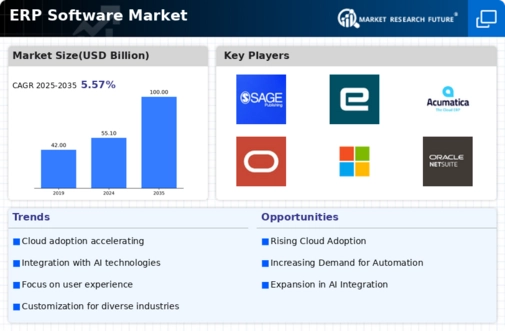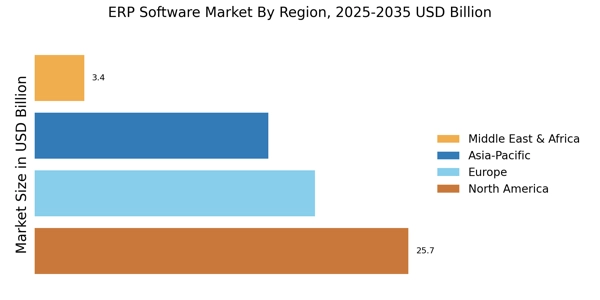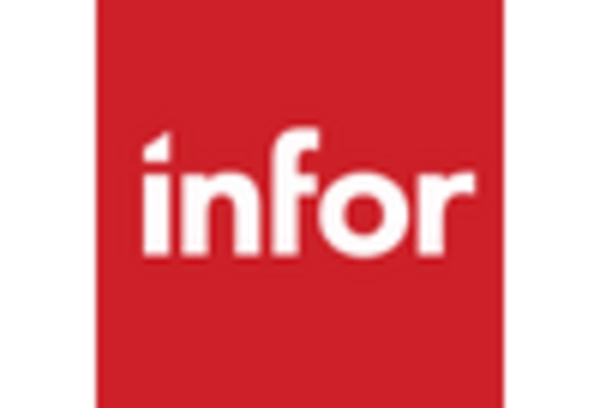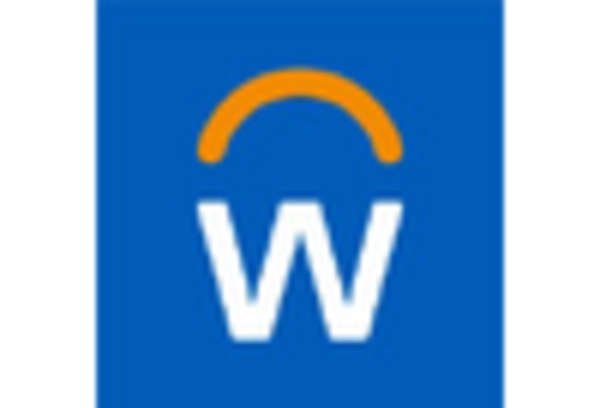The ERP Software Market is currently characterized by a dynamic competitive landscape, driven by rapid technological advancements and an increasing demand for integrated business solutions. Major players such as SAP (DE), Oracle (US), and Microsoft (US) are at the forefront, each adopting distinct strategies to enhance their market positioning. SAP (DE) focuses on innovation through its Business Technology Platform, which integrates data management and analytics, thereby enabling businesses to make informed decisions. Oracle (US) emphasizes cloud-based solutions, aiming to streamline operations for enterprises of all sizes, while Microsoft (US) leverages its Azure cloud infrastructure to offer scalable ERP solutions that cater to diverse industries. Collectively, these strategies not only enhance operational efficiencies but also intensify competition within the market.
The business tactics employed by these companies reflect a moderately fragmented market structure, where localized strategies and supply chain optimization play crucial roles. Companies are increasingly localizing their offerings to meet regional demands, which enhances customer satisfaction and loyalty. This localized approach, combined with strategic partnerships and acquisitions, allows key players to maintain a competitive edge while addressing the unique needs of various markets.
In August 2025, SAP (DE) announced a strategic partnership with a leading AI firm to enhance its ERP solutions with advanced machine learning capabilities. This move is significant as it positions SAP to offer more intelligent automation features, thereby improving operational efficiencies for its clients. The integration of AI into ERP systems is likely to redefine how businesses manage their resources, making this partnership a pivotal step in SAP's innovation strategy.
Similarly, in September 2025, Oracle (US) launched a new suite of cloud applications designed specifically for the manufacturing sector. This initiative aims to address the unique challenges faced by manufacturers, such as supply chain disruptions and production inefficiencies. By tailoring its offerings to specific industries, Oracle is not only expanding its market reach but also reinforcing its commitment to providing specialized solutions that enhance productivity and operational resilience.
In October 2025, Microsoft (US) unveiled a new feature within its Dynamics 365 ERP platform that integrates real-time analytics and reporting capabilities. This enhancement is particularly relevant as businesses increasingly seek data-driven insights to inform their decision-making processes. By prioritizing real-time data access, Microsoft is likely to strengthen its competitive position, appealing to organizations that require agility and responsiveness in their operations.
As of October 2025, the ERP Software Market is witnessing trends that emphasize digitalization, sustainability, and AI integration. Strategic alliances are becoming increasingly important, as companies collaborate to enhance their technological capabilities and expand their service offerings. The competitive differentiation is shifting from traditional price-based competition to a focus on innovation, technology integration, and supply chain reliability. This evolution suggests that companies that prioritize these aspects will likely emerge as leaders in the ERP landscape, shaping the future of business operations.


















Leave a Comment